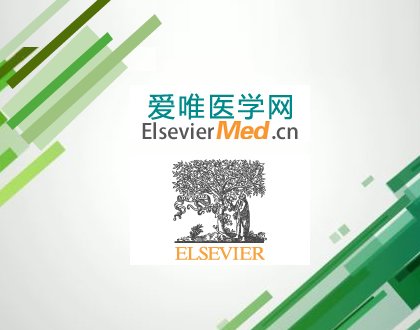出血性卒中新治疗方法优于药物治疗
随机多中心的MISTIE试验显示,一种对颅内出血患者的血栓直接注射组织纤溶酶原激活剂(TPA)的微创手术,可安全、显著地改善功能、独立性,并且极大地降低随访1年时的常规药物治疗费用。

Daniel F. Hanley博士
约翰霍普金斯大学神经病学教授Daniel F. Hanley博士在国际卒中大会上声称:“这种手术简单、迅速且易于推广。它使我们对脑出血这种目前无法治疗的卒中类型燃起了希望。”
MISTIE(微创手术加rTPA用于消除颅内出血)是一项中等规模的Ⅱ期概念验证研究,旨在观察缩小栓子体积是否能改善颅内出血患者的结局。基于令人鼓舞的MISTIE试验1年结果,研究者计划继续招募至500例患者以开展决定性的Ⅲ期试验。
本项试验从26家医院招募了96例颅内出血患者,随机分组给予微创手术或药物治疗。Hanley博士认为,该试验“最令人吃惊的”发现是,6个月随访时观察到的手术干预益处,以及在国际卒中大会上报告的获益更显著的1年结果。
该手术需要在患者颅骨上开1角硬币大小的孔,经由此孔将1根导管插至栓子中,然后每8 h释放1剂TPA,治疗2~3天。随着TPA使栓子溶解,分解产物经由导管排出。该手术平均需要42分钟,而颅骨切开术平均需要3 h。
本次报告的重要发现还包括:
·手术治疗组的非ICU住院时间平均缩短了38天。
·手术治疗组急症治疗的人均费用减少了44,000美元,相对减少35%。
·1年时,药物治疗组有21%的患者住在护理之家,而这一比例在手术治疗组仅为8%。
·手术治疗组患者的卒中影响量表(SIS)移动能力平均得分从6个月时的40分倍增至1年时的80分,而药物治疗组患者的平均得分在80~90天之间保持在20分左右。80分意味着患者在绝大多数情况下可以做自己想做的事情,20分提示患者很少能做自己想做的事情。
·两组患者的SIS日常活动评分有相似程度的改善,不过手术治疗组的评分在6个月至1年期间基本呈直线增加,而药物治疗组的评分在90~180天期间没有明显变化。
·在1年时具有功能独立性(定义为改良Rankin评分为0~2)的患者比例方面,手术治疗组的的绝对值比药物治疗组提高了14%。
基线时平均栓子体积为46 ml。手术目标是将栓子体积缩小60%,结果共有72%的患者实现了这一目标。经过3天治疗,栓子平均缩小了28 ml。
“外科医生基本都能达到使栓子体积缩小20~40 ml的目标。共有29名外科医生实施这种手术,我们未观察到学习曲线。这是个好消息,意味着这是一种相当简单的手术。实际上,相关培训仅为1次时间为1 h的资深神经外科医生的辅导,和短时间的电脑自学课程。”
在卒中发生后36 h之内和之后接受手术治疗的患者,具有相似的结局。
在栓子体积缩小至10 ml以下的患者中,大约60%在180天时具有功能独立性,而在残余栓子体积超过35 ml的患者中,这一比例仅为10%。
Hanley博士表示:“我认为是时候考虑批准这种手术了,这对于全球每年颅内出血的100万患者而言意义重大。”不过他也承认,手术获益随着时间延长而增加,尽管手术治疗在头3天内就能使栓子大大缩小,但治疗脑损伤仍需要较长时间。
MISTIE试验由国立神经疾病与卒中研究所资助。Hanley博士报告称无相关利益冲突。
爱思唯尔版权所有 未经授权请勿转载
By: BRUCE JANCIN, Cardiology News Digital Network
A minimally invasive surgical procedure that enables direct local delivery of tissue plasminogen activator to the blood clot in patients with intracerebral hemorrhage safely resulted in markedly improved functional ability, greater independence, and dramatically lower costs than conventional medical management at 1 year of follow-up, in the randomized multicenter MISTIE trial.
"The procedure is simple, rapid, and easy to generalize. There is now real hope we have a treatment for the last form of stroke that doesn’t have a treatment: brain hemorrhage," Dr. Daniel F. Hanley said at the International Stroke Conference sponsored by the American Stroke Association.
That being said, MISTIE (Minimally Invasive Surgery plus rTPA for Intracerebral Hemorrhage Evacuation) was a modestly sized, phase II proof-of-concept study, the concept being that reducing clot size should improve outcomes in patients with intracerebral hemorrhage (ICH). Based on the encouraging 1-year MISTIE results, the plan is to ramp up to a 500-patient definitive phase III trial, said Dr. Hanley, professor of neurology and director of the brain injury outcomes division at Johns Hopkins University, Baltimore.
The trial involved 96 patients with ICH at 26 hospitals who were randomized to the minimally invasive surgical procedure or medical management. The "most startling" finding to emerge from the trial, in Dr. Hanley’s view, was that the benefits of the surgical intervention documented at 6 months’ follow-up and reported at last year’s International Stroke Conference are even greater at 1 year.
"The benefits of surgery are expanding over time," the neurologist observed. "It takes a long time to resolve brain injury, even though we’re getting the majority of the clot out in the first 3 days."
The procedure entails cutting a dime-sized hole in the patient’s skull, snaking a catheter through it and into the bulk of the clot, then delivering a dose of tissue plasminogen activator (TPA) every 8 hours for 2-3 days. As TPA dissolves the clot, the material is evacuated through the catheter. The surgical procedure took an average of 42 minutes compared with 3 hours, typically, for a craniotomy.
Among the key findings from the MISTIE 1-year update:
• Non-ICU hospital length of stay averaged 38 days less in the surgically managed group.
• The cost of acute care averaged $44,000 less per patient, a 35% reduction, compared with medical management.
• At 1 year, 21% of patients in the medically managed group were in a nursing home, compared with just 8% of the surgically managed group.
• The average Stroke Impact Scale mobility score in the surgical group doubled from 40 at 6 months to 80 at 1 year while plateauing at about 20 between days 80 and 90 in the medically managed patients. A score of 80 on this scale means a patient can do what he wants most of the time; a score of 20 means he seldom can
• The average Stroke Impact Scale activities of daily living score similarly showed progressive, roughly linear improvement in the surgical group between 6 months and 1 year while plateauing at a low performance level at 90-180 days in the medically managed group.
• The proportion of patients with functional independence as defined by a modified Rankin score of 0-2 was an absolute 14% greater in surgically managed compared with medically managed patients at 1 year.
The average baseline clot volume was 46 mL. The surgical goal was to remove 60% of the clot volume; this was achieved in 72% of treated patients. On average 28 mL of clot were removed over a period of 3 days.
"The surgeons are consistently able to achieve 20- to 40-mL reductions in clot volume. Twenty-nine surgeons have done the procedure, and we don’t see a learning curve. That’s good. It means this is a pretty simple procedure to do. In point of fact, the training consisted of a single 1-hour conference with the lead neurosurgeon and a short self-learning computer program," according to Dr. Hanley.
Roughly 60% of patients whose clot volume was reduced to less than 10 mL had functional independence as reflected in a modified Rankin score of 0-2 at 180 days, compared with a 10% rate in those with a residual clot volume in excess of 35 mL.
Outcomes were similar regardless of whether the surgery was done within 36 hours after stroke onset or later.
"To me it looks like the time consideration for this surgery is going to be permissive. That’s very important for the 1 million people in the world each year who have an ICH," the neurologist noted.
The MISTIE trial was funded by the National Institute of Neurological Disorders and Stroke. Dr. Hanley reported having no relevant financial conflicts.
欢迎关注Elseviermed官方微信

下一篇: 日本研究:S-1辅助化疗可改善胰腺癌生存
- 您可能感兴趣的文章
-
- 他们推荐了的文章
-
- •徐留建 顶文章 阻塞性睡眠呼吸暂停、心血管疾病风险及全因死亡率:对前瞻性队列研究的meta分析 16小时前
- •刘国梁 顶文章 施仲伟:起始降压治疗策略——争议与挑战 1天前
- •魏东 顶文章 2015年糖尿病学重大进展:EMPA-REG OUTCOME研究 2天前
- •maggie 顶文章 阿斯利康5亿美元转让两款心血管药品 2016-03-16 15:46:29
- •maggie 顶文章 华润医药简化运营着眼香港IPO 10亿美元 2016-03-16 15:46:13



